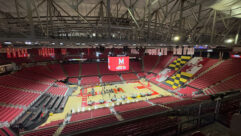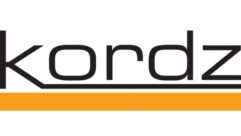Loudspeaker Processors
Jul 1, 2003 12:00 PM,
Chris Michie
Loudspeaker processors have been part of the audio system designer’s vocabulary for more than two decades, and many modern sound systems — from relatively straightforward meeting room and club installations to large-scale concert systems — include loudspeaker processors. This article will briefly describe the various loudspeaker processor types and outline applications for which each type is most suitable.
In the most general terms, loudspeaker processors have evolved through three distinct stages. Dedicated loudspeaker processors first appeared at least two decades ago as rackmounted “control units” designed to provide system optimization and protection facilities for specific speaker systems. Typically, this first type of loudspeaker processor (let’s call it an LP1 for brevity) is fed a full-frequency signal and connects directly to the speaker system amplifiers. Primary functions of the LP1 include: splitting a full-frequency input into band-limited signals for bi- or triamplified systems; providing equalization to correct for the acoustic characteristics of speakers or cabinets; and detecting and preventing overload conditions. Some LP1s also include delay circuitry to correct for time offsets between speaker components. A front-panel gain control is common, but this type of loudspeaker processor is typically designed as a “set and forget” device and features few user controls; simple LEDs indicate status and limiter action.
Second-generation processors (LP2s) added multiple crossover options and allowed equalization and dynamic control functions to be manipulated by the operator. LP2s offer outputs that may be full frequency or band limited, and advanced models include multiple outputs and test and measurement facilities. Though typically featuring versatile front-panel controls (which may be password protected or covered to prevent unauthorized adjustment), LP2s are typically designed to reside in an amp or a signal-processing rack.
The third distinct product evolution in the series, the LP3, takes the functions of the LP2 into the software domain. Often PC based, LP3 systems provide a versatile drag-and-drop interface that allows the designer to select, arrange, and modify complex signal-processing configurations. Many routing and processing scenarios may be saved and recalled, and the complexity and functionality of any active setup is limited only by the designer’s imagination and the digital signal-processing resources available.
Though these three product types can be seen as evolutionary, none are obsolescent — each type is available, offers its own range of benefits, and may be the most appropriate choice in a certain situation. Further, cross-fertilization and general technical advancement, particularly in the areas of DSP and high-definition audio capabilities, have blurred the distinctions between the three basic types. Now that the three types have been briefly introduced, I will describe them in more detail.
THE DEDICATED CONTROLLER
Because the dedicated speaker processor is an integral part of the loudspeaker system it controls — and is not generally used as a standalone unit — I will not examine this product category (which I have labeled the LP1) in depth. However, a little historical background will explain why and when the dedicated speaker processor first appeared.
As in the case of many loudspeaker product advancements, initial development was prompted by the needs of the live sound industry. Until the early 1970s, most touring sound systems were assembled from components. The designer/installer/operator/soundperson had to match speakers with cabinets and crossovers and then select appropriate amplifiers to drive the system. With active multiway systems, it was all too easy for operators to make a wrong connection, such as connecting the low- or midfrequency amplifier output to the HF drivers. Multibox P.A. systems, which typically consisted of bass bins and separate HF cabinets, had to be stacked carefully to avoid phase cancellation. Without input level protection, it was quite possible for an operator (or a client) to overdrive an entire system, which could result in burnt-out amps and speakers.
Forward-thinking sound rental companies took steps to prevent such costly mistakes, and in the early 1970s, McCune Sound of San Francisco fielded one of the first closed systems — a complete amplification and speaker package that was more or less foolproof. Including dedicated amplifiers matched to a horn-loaded, three-way loudspeaker cabinet, the McCune JM-3 system also included integrated crossover and protection circuitry. Neither the crossover points nor the protection limiters could be adjusted by the operator, and custom cable connectors ensured that the amps connected to the appropriate components. The operator had merely to connect a line input to the amp-rack front panel to consistently reproduce full-frequency speech or music. Because each cabinet’s components were matched to each other and the amps, the whole system could be effectively “factory tuned” for consistency. This approach eliminated many common setup mistakes, and touring sound engineers found that with a consistent and dependable sound system ready to use as soon as it was aimed and plugged in, they could more easily address acoustical and musical balance problems.
One of the designers of the JM-3 was John Meyer, and it was Meyer Sound Laboratories that launched the first speaker processor in the professional sound reinforcement market in 1979. The UM-1 UltraMonitor, developed in collaboration with UltraSound for its client the Grateful Dead, could be operated only with its associated processor, though the choice of amplifier was left to the user. Meyer’s product innovation met with initial resistance from many quarters, in part because of the relative expense of the complete systems, but other manufacturers soon followed. Renkus-Heinz introduced its Smart system, and Apogee also adopted the concept; dedicated loudspeaker processors are now commonly found in both large-scale professional multiway loudspeaker systems and in manufactured club and convention systems. A thorough explanation of the technical capabilities and benefits of using loudspeaker processors — improved reliability, performance and efficiency, and the potential for flexibility, standardization, and economy — can be found on the ARX Web site at www.arx.com.au/ISC_AppNotes.htm.
THE RACKMOUNT MULTIPROCESSOR
While loudspeaker manufacturers were developing dedicated loudspeaker processors to optimize the performance of their own products, traditional signal processor vendors also expanded their product lines to include devices that offered many of the same functions. An early example is BSS Audio‘s Omnidrive Loudspeaker Management System, launched in 1994. Today the Ashly Audio Protea 4.24C, the Biamp MSP11 multifunction system processor, the Crown IQ-USM 810, the dbx DriveRack system, the Klark Teknik DN9848, the Peavey Digitool MX programmable digital processor, the White Instruments ParaMedic line, the Yamaha DME32, and the XTA DP226 all offer comparable functionality. Those and other multiprocessors offer a virtual toolbox approach to sound system problem solving.
Fully programmable, this type of loudspeaker processor typically offers a multilayer front-panel display and a jog wheel for navigating the various pages and modifying and selecting signal-processing parameters. Many of these devices may also be programmed and controlled remotely by means of soft panels or through a PC connected through RS-232 and RS-485 interfaces. Some multiprocessors include MIDI control facilities, and several offer compatibility with SIA Software’s Smaart and other test and measurement software packages. Though each of these products offers a different set of features, you can imagine a composite product that would include the following:
- as many as eight inputs, including both analog and digital AES/EBU stereo, and ten outputs, also in analog and digital formats;
- 24-bit A/D and D/A converters and optional 96 kHz output resolution;
- multiple ⅓-octave and parametric equalizers, assignable to both inputs and outputs;
- as many as 12 full-function compressors and 8 look-ahead limiters, assignable to the inputs;
- multiple crossovers in two-, three-, four-, five-, and six-way configurations, linkable for stereo and multichannel applications and with additional mono sum and LFE outputs;
- a selection of crossover filter types (including Butterworth, Bessel, and Linkwitz-Riley) with selectable rolloff characteristics from 6 to 48 dB/octave;
- additional highpass and lowpass filters;
- comprehensive dynamics processing, including compressors, limiters, gates, and expanders, assignable to multiple outputs;
- as much as 20 seconds of digital delay assignable to individual outputs;
- advanced DSP-based processing algorithms for automatic gain control and ambient noise compensation; and
- a PCMCIA slot for storing and recalling settings.
This list of features for this hypothetical product is only a guide. Several of the LP2-type multiprocessors are expandable, and many offer multiple I/O options by means of plug-in cards, offering almost unlimited versatility. Four Yamaha DME32s, for example, can be cascaded to create a 128-input/128-output system.
SOFTWARE-BASED SYSTEMS
The third type of loudspeaker processor is entirely software based, except for the physical I/Os and analog/digital converters. One of the earliest to market with this type of processor was Peavey’s Architectural Acoustics division, which introduced the Peavey MediaMatrix in 1993. Using the drag-and- drop interface, a MediaMatrix user can create complex signal-processing configurations simply by selecting components from a library, placing them on screen, and drawing connections among them. Configurations may be easily saved, recalled, modified, or duplicated, and the software-based system allows for an affordable upgrade path as sound systems are expanded. Examples of other software-based loudspeaker-processing systems include Biamp’s Audia Digital Audio Platform, BSS’s Soundweb, Lake Technology‘s Contour, the Shure P4800, and Rane‘s DragNet.
SO MANY CHOICES
Given the broad choice of products available, finding the most suitable loudspeaker processor for a particular installation should not be too difficult. For relatively simple system designs, the LP1-type control units that are included in most modern professional-quality biamped and triamped systems will be more than adequate. Several amplifier companies offer network architectures that allow for centralized monitoring of a complex sound system — Crown’s IQ system and QSC‘s QSControl being two examples — and such systems may offer all of the monitoring and control facilities necessary for a club system, meeting room, or distributed playback system.
More complex systems may require the advanced functions and flexibility offered by LP2-type multiprocessors, of which there are more than a dozen to choose from. One factor limiting the number of possible candidates for a particular installation would be the number of inputs and outputs required from a single processor. However, several lower-cost, lower-functionality units acting in concert may well perform all of the necessary functions of a higher-cost, higher-capability device. If future upgradeability is an issue, then it may be more sensible to install a software-based LP3-type system. The ability to interface with remote control panels and to execute system reconfigurations remotely may also be tiebreakers.
After more than two decades in the marketplace, the technology of loudspeaker processing has become widespread and mature. Though not essential to every installation, loudspeaker processors — whether type LP1, LP2, or LP3 — provide the system designer a broad palette of functionality and benefits.
Chris Michieis a contributing editor to Mix magazine.
For More Information
ARX Systems
www.arx.com.au
Ž 205
Ashly Audio
www.ashly.com
Ž 206
Behringer USA
www.behringer.com
Ž 207
Biamp Systems
www.biamp.com
Ž 208
BSS Audio USA
www.bssaudio.com
Ž 209
Crown
www.crownaudio.com
Ž 210
Dbx Professional
www.dbxpro.com
Ž 211
Klark Teknik
www.klarkteknik.com
Ž 212
Lake Technology
www.contour.lake.com
Ž 213
Peavey Electronics Corp.
http://aa.peavey.com
Ž 214
QSC Audio Products
www.qscaudio.com
Ž 215
Rane Corp.
www.rane.com
Ž 216
Shure
www.shure.com
Ž 217
White Instruments
XTA Electronics/Group One
www.xta.co.uk
Ž 219
Yamaha
www.yamaha.com
Ž 220
Ž Circle this number on Reader Service Card or visit freeproductinfo.net/svc










